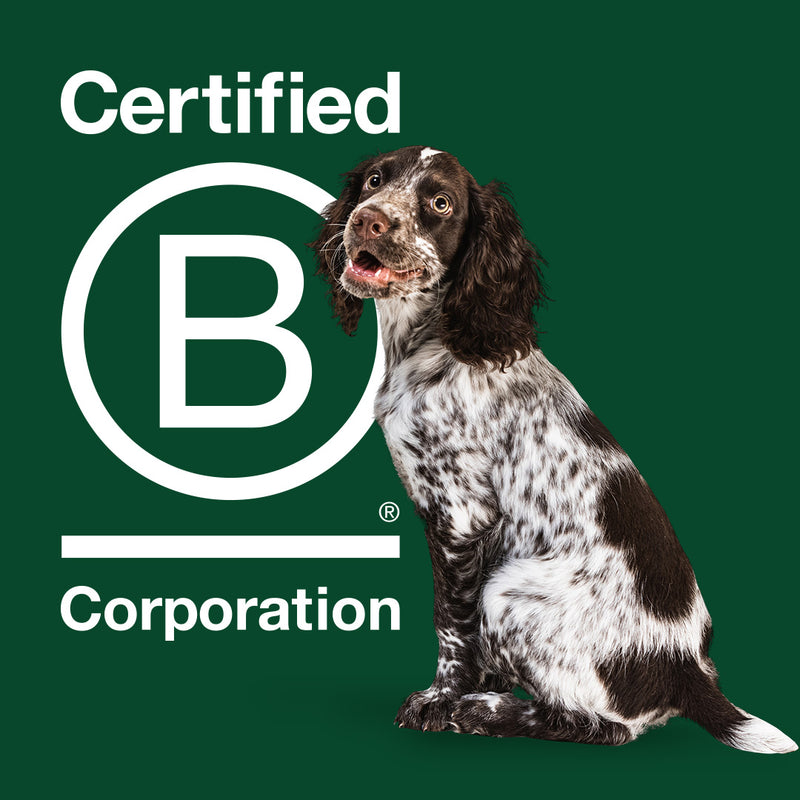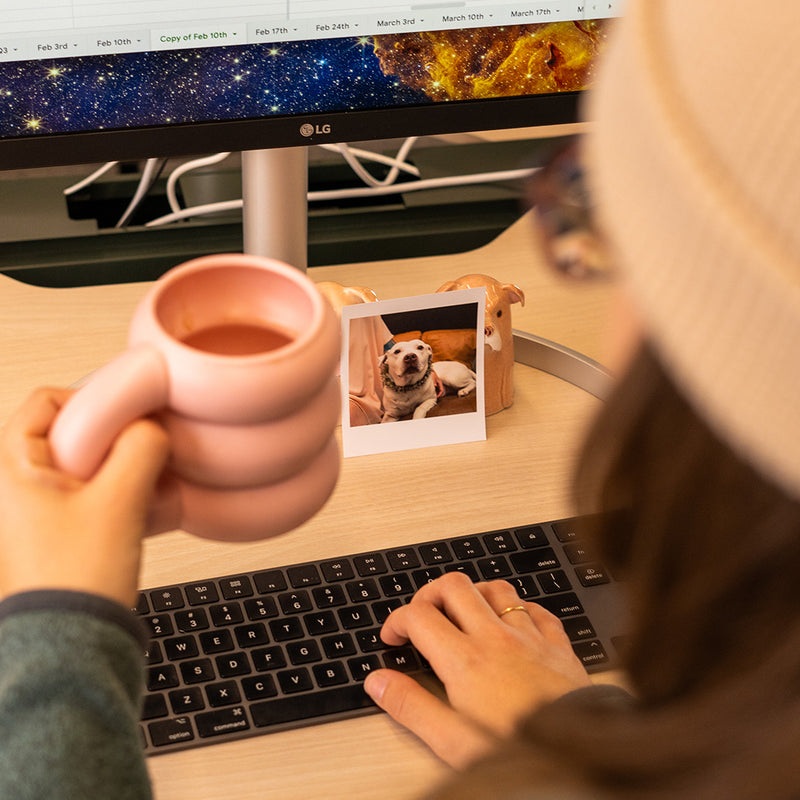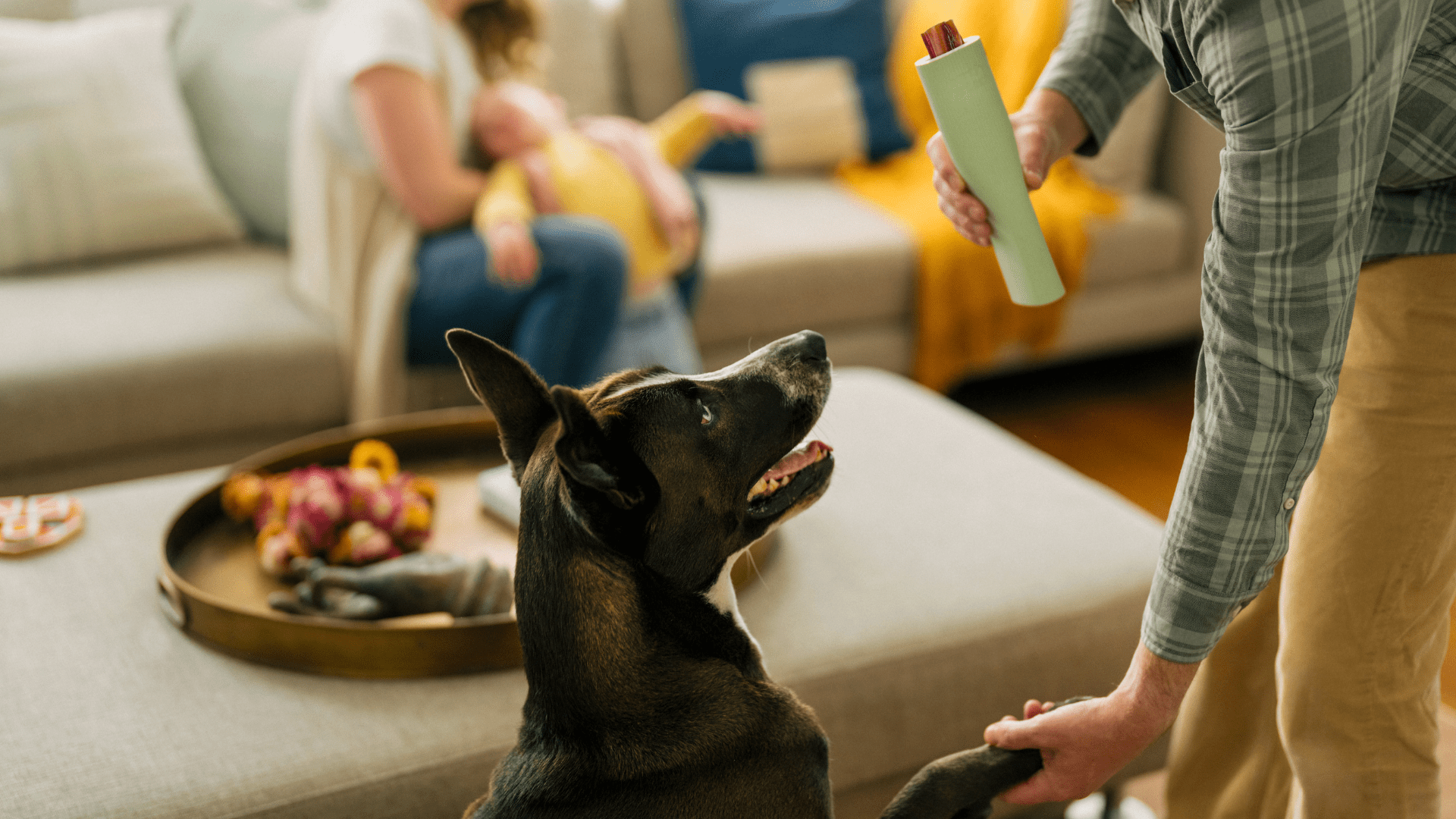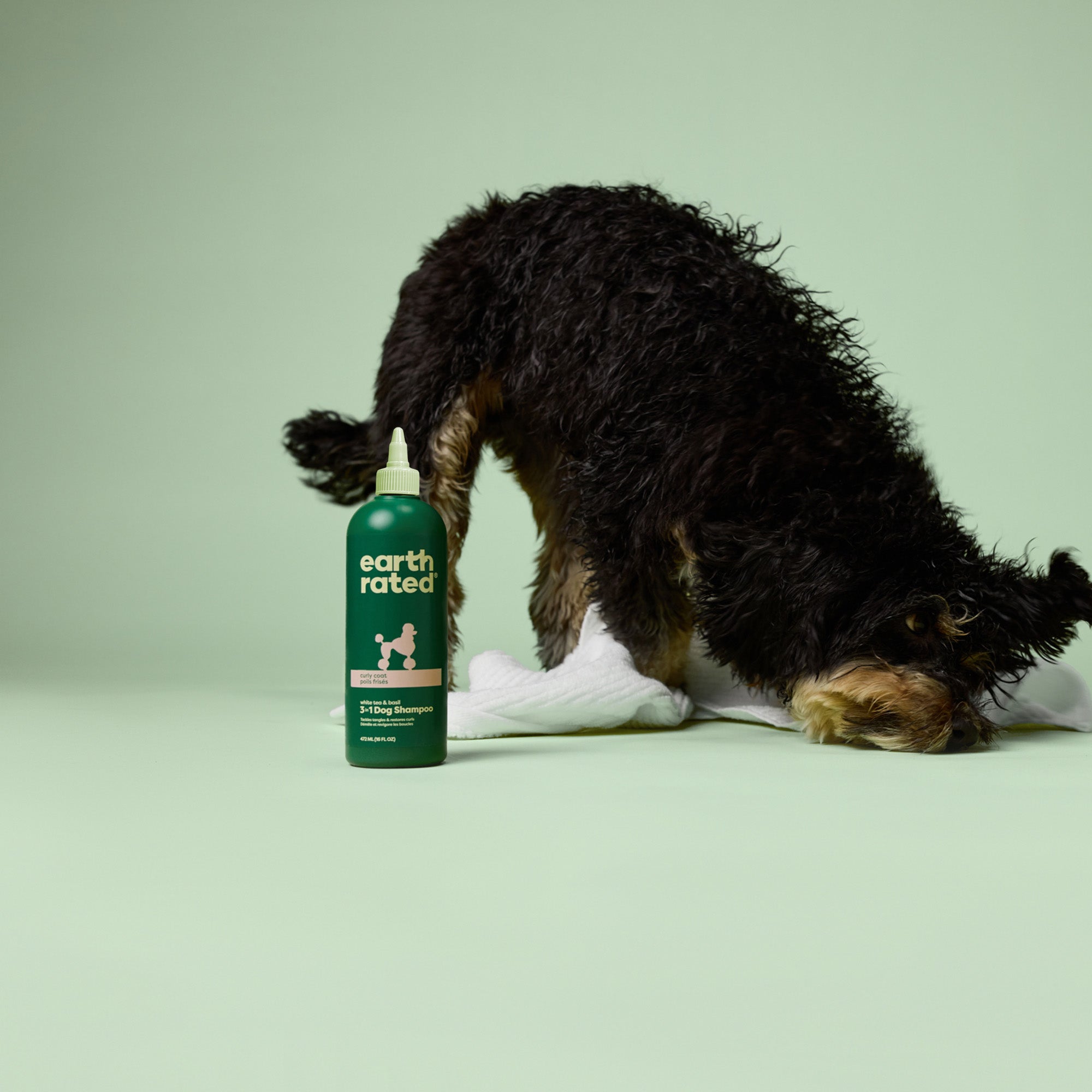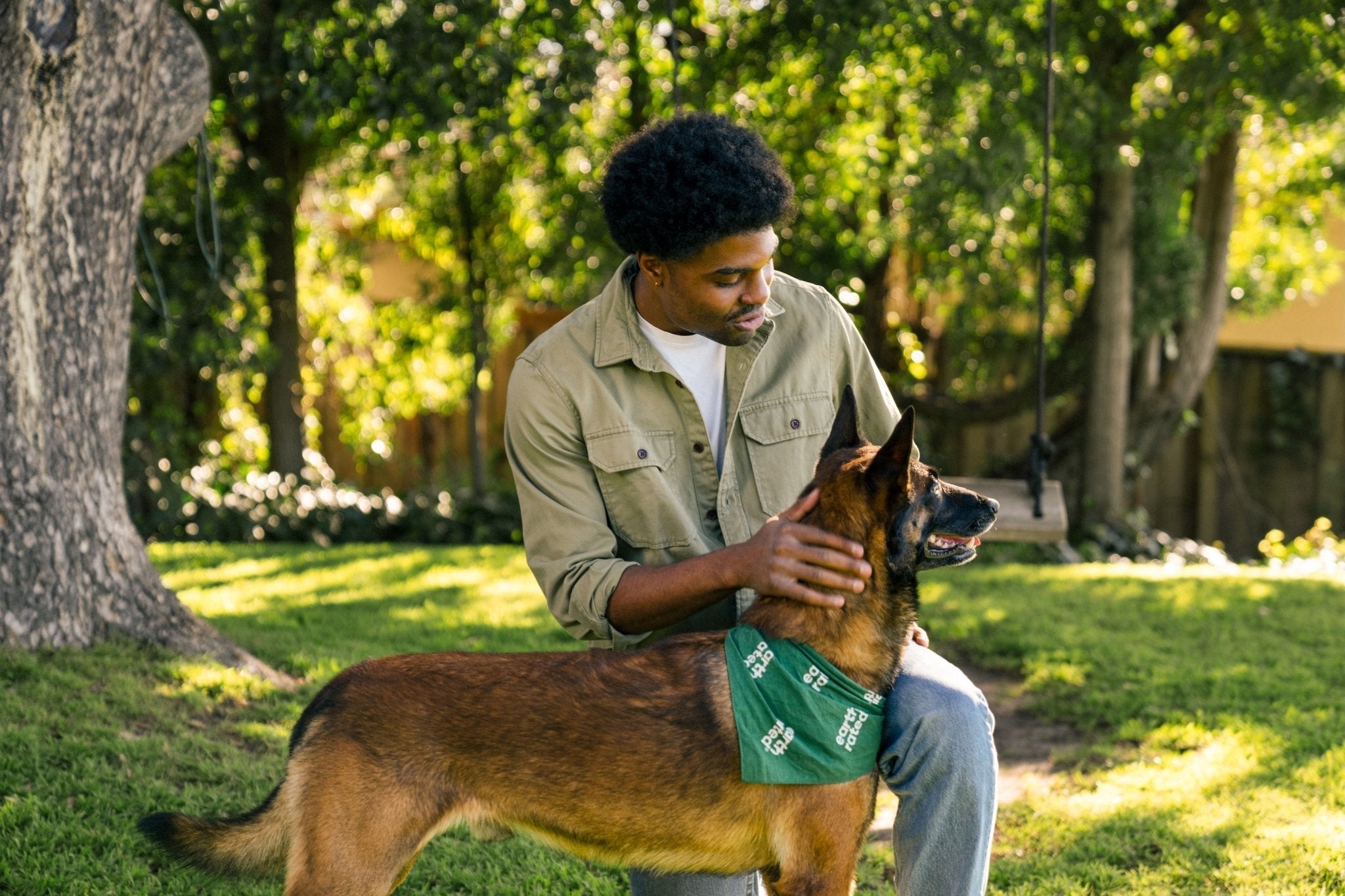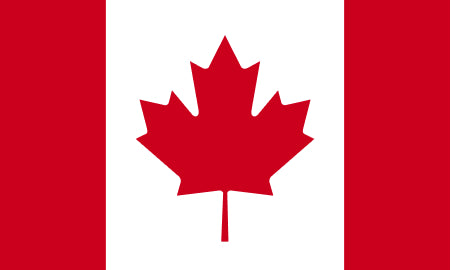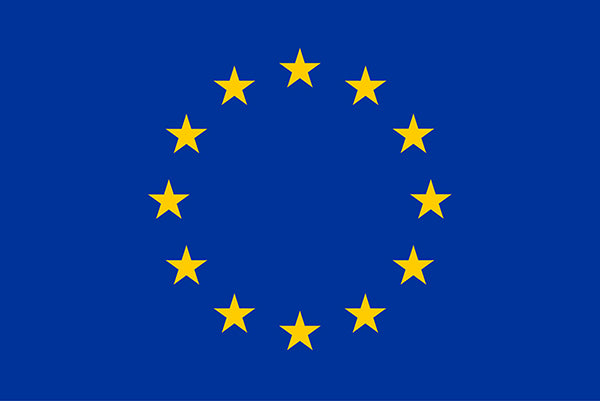Let's face it. Caring for your dog involves much more than cuddles, kibble, and walkies. Just like us, a big part of their well-being is their dental hygiene - an area that is often overlooked. Poor dental health can lead to bad breath and things like tooth decay. It can even impact your dog's overall health. We've got you covered with a comprehensive guide for everything you need to know about keeping your dog's teeth clean and healthy.
Prepping for teeth cleaning
The first step to a successful teeth cleaning session is selecting the right products and tools. When it comes to toothpaste, sharing is not caring! Human toothpaste can be both unpleasant and harmful to your pup, so it's essential to use a formulation specifically designed for dogs. Dog toothbrushes or dental wipes are designed to fit comfortably in their mouths and effectively clean their teeth.
Keep calm & clean on
Let's be real. Your dog may not initially love the process of their teeth being cleaned. That's why creating a calming environment is crucial for the most stress-free experience possible. Whether it's choosing a quiet room, speaking to them in your best soothing dog-voice, or ensuring they're relaxed before you begin, give 'em some time to adapt.
Our step-by-step guide to cleaning your dog's teeth
- First, introduce the product by letting your dog interact with, smell, and lick the toothpaste or wipe to get them used to the flavor and the packaging.
- Gently open their mouth by carefully lifting your dog's lips to expose their teeth and gums.
- Start with the front, easier to reach, teeth and gently brush or wipe in a circular motion.
- Slowly move towards the back of your dog's mouth, making sure to focus on their gum line too.
- Patience is key. Take as many breaks as you need and always use gentle, reassuring strokes.
How to make it, dare we say, enjoyable...
Almost any cleaning routine or training session can be made enjoyable when positive reinforcement is incorporated. If you praise and give treats to your pup, over time, they will start associating teeth cleaning with a positive experience. That's right. Your dog will be smiling from ear to ear in no time.
Dental care frequency
Establishing a regular dog dental care routine is all part of being a responsible dog owner. Ideally, you should clean your dog's teeth daily to prevent the buildup of plaque and tartar. In addition to at-home dental care, regular vet check-ups are important for maintaining your dog's dental health. Vets can even perform professional dental cleanings and check for any signs of dental disease.
According to Aryel Lafleur, an Accredited Professional Force-Free Dog Trainer and Behaviour Consultant, if you're not someone who regularly examines your dog's mouth, one of the first signs you might notice is bad breath. While it's not common for dog breath to smell great, an exceptionally foul odor could indicate a significant accumulation of plaque and tartar or even infected teeth. At this stage, simply brushing your dog's teeth and using preventive products will not be sufficient. It’s important to get it checked out professionally.
Redness around your dog's teeth and gums may suggest gingivitis, often caused by plaque and tartar buildup. While brushing can help reduce gingivitis, if there's a considerable amount of tartar, a visit to the vet is indicated as there might be underlying infection.
It's important to know that plaque is typically invisible or appears as a clear slimy film on your dog's teeth. Over time, this film accumulates bacteria, eventually calcifying into tartar, which typically has a brown/greenish color and is very hard. Tartar cannot be removed by regular products or brushing; special dental tools are required to do so.
Discovering fallen teeth around the house is never normal and indicates a significant tooth infection leading to bone loss. Unfortunately, this cannot be reversed, and your dog may need to have more teeth removed urgently to avoid the possible infection becoming a larger problem. Even if your dog is still eating normally, this condition is very painful. Seeking veterinary assistance is crucial in such cases.
Toothbrush alternatives
Dental wipes
Simply slip a dental wipe onto your finger and voilà – stress-free cleaning for your dog's teeth and gums. They generally come pre-soaked for hassle-free use and are ideal for fresh doggy breath on the go. Opt for dental wipes that are textured so they help lift plaque from teeth.
Diets
Your dog's diet can also contribute to their dental health. When it comes to raw food vs kibble, is there a benefit of choosing one diet over another? Every dog is different, so do some research to find the right diet for your dog.
Signs of dental issues in dogs
It’s important to recognize early signs of dental problems in dogs. Although it's safe to say no one likes bad breath, other dental issues can be a bit more serious, like swollen gums and visible tartar buildup. So, if you notice any of these signs, or if your dog is having trouble eating, it's time to pay a visit to your local vet.
Maintaining your dog's dental health is a part of being a responsible dog owner and part of your dog’s overall well-being. Regular teeth cleaning, along with alternatives like dental chews and toys, can significantly contribute to your dog's hygiene and quality of life. According to Aryel Lafleur, an Accredited Professional Force-Free Dog Trainer and Behaviour Consultant, smaller dog breeds, such as Chihuahuas, Shih Tzus, Yorkshire Terriers, Miniature Poodles, and Pugs, are more prone to dental diseases, plaque, and tartar buildup due to the size of their mouths. Smaller mouths with tightly grouped teeth tend to accumulate more bacteria which, when left unattended, may lead to infections and abscesses developing at the root of their teeth. These issues, often invisible without X-rays, can result in the deterioration of the bone around the root, causing loose teeth that may eventually fall out. This painful condition is unfortunately quite common among smaller dogs. Larger dogs with narrow mouths, like Greyhounds, can also experience dental problems for similar reasons as smaller dogs.
It's important to note that all dogs, regardless of size, can develop plaque/tartar accumulation and periodontal problems - especially if they lack chewing enrichment or preventive care. Larger dogs remain at risk if they don't receive proper dental attention.
For dogs that love tennis balls, it's worth mentioning that the material of these balls can be abrasive and lead to premature wear on their teeth. If you associate the love of tennis balls with your dog, consider switching to natural rubber balls like Earth Rated’s Fetch Toy to avoid potential dental issues.
Dental infections in dogs have been linked to cardiac problems. The jaw and skull have multiple blood vessels, and if bacteria reach the tooth's root, it can travel through the bloodstream and accumulate in the heart. This complication is a serious health concern that can be effectively avoided with proper preventive care.
Smaller dogs, especially those that develop infections in their mandibular canines and incisors, can be at risk of jaw fractures. Considering that a dog's tooth root extends as far as what is visible externally, infections in these smaller breeds can lead to little to no bone left to support the jaw. This occurrence is more common than you think!
It's important to note that just because a dog is eating well doesn't mean they don't feel pain. For anyone who has experienced a toothache, it's easy to understand the intense pain and discomfort it causes. If a dog stops eating, it's a sign that the problem has become very serious, and this can quickly lead to complications such as hypoglycemia, cirrhosis, dehydration, etc.
For more dog wellness tips, tricks, and cute dog pics, sign up for our Earth Rated newsletter. SIGN UP
Frequently Asked Questions
How can I get plaque off my dog's teeth?
The most effective method for removing plaque is to brush their teeth! You can also encourage your dog to chew and use specialized foods and products designed to reduce plaque buildup in dogs. Bones and chew toys are excellent options to minimize plaque build-up. If you want to ensure you're using items that have been tested and proven to be safe while reducing plaque, look for the VOHC logo on the packaging! Additionally, several dog food brands specialize in promoting dental health with kibble designed to reduce plaque buildup with every meal. Both structurally and enzymatically, this food is your best passive friend when it comes to plaque accumulation.
How can I clean my dog's teeth at home?
The most effective way to maintain your dog's oral health is by brushing their teeth daily. However, this is a habit that needs to be gradually introduced and trained. Choose a toothbrush that suits the size of your dog's mouth and use toothpaste specifically designed for dogs (be cautious, as human toothpaste can be toxic to animals!). I always recommend starting slowly by using your fingers and then progressing to the toothbrush.
When brushing, focus on the visible sides of the teeth, as plaque and tartar tend to accumulate there. Avoid going too deep inside near the tongue or the roof of the mouth. Remember to pay attention to the incisors and molars as well! This is an unusual situation for most canine companions and should be taught with a fear-free, respectful method to avoid aversion to brushing.
If brushing or wiping is not possible, and your dog is simply looking for something to chew on, opt for items that are natural and not harmful to their mouths. Natural sticks are dangerous for dogs, so we don’t recommend letting your dog chew on them. Instead, try Earth Rated's dog Chew Toy - designed to be filled with bully sticks, peanut butter, or frozen treats and made from natural rubber - perfect for a gentle gum massage.
Is it too late to start brushing dogs' teeth?
It's never too late to begin brushing your dog's teeth! However, if there is a significant buildup of plaque and tartar, there may be underlying infection and inflammation. It is crucial to have this examined and cleaned by a veterinarian before starting to brush, as attempting to brush in such a condition could potentially cause more damage and discomfort. Interestingly, bad breath is never normal in dogs and should always be investigated!
How can I clean my dog's teeth without brushing them?
Chewing on bones and toys has been demonstrated to effectively reduce plaque accumulation. However, it's important to be cautious, as some chewing elements can be too hard and may lead to broken teeth in your dog. As a general rule of thumb, if you can't mark the chew with your fingernail, it's too hard on their teeth.
Additionally, there are additives that can be introduced to water, softening the plaque and facilitating its removal when your dog chews. Another effective method is using kibble specifically designed to reduce plaque.
Ask your veterinarian about your dog’s teeth during your annual visit and keep an eye on their dental health!



